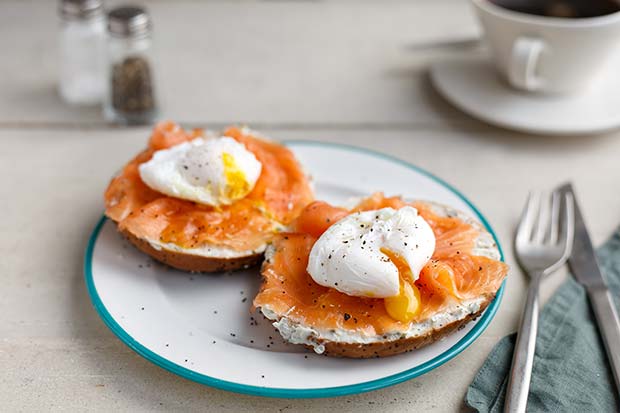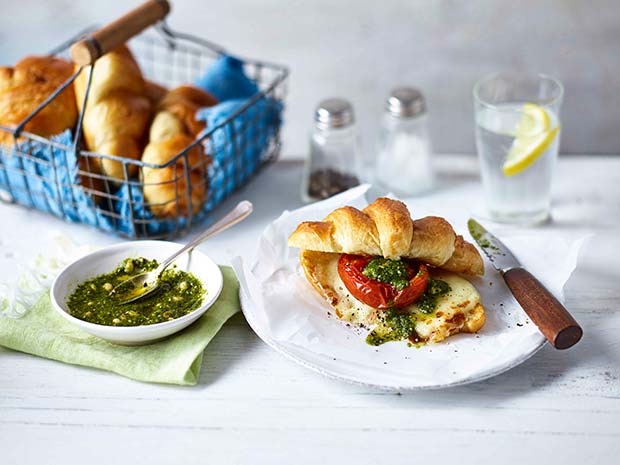A quiet revolution is taking place among British breakfast habits which offers great opportunities for those suppliers with the initiative to act on the trends. The most significant trends are health and on-the-go convenience, says Steph Okell, senior marketing manager for Pepsico Quaker. It is gratifying to see that the old healthy favourite of porridge has seen sales more than double in the last 12 years. With nearly seven out of ten households buying porridge it is not surprising that the breakfast segment continues to present huge sales opportunity for retailers, says Steph.
 Another trend worth watching is that consumers are being more adventurous in their choice. Take, for example, brioche rolls, which Olivier Ripoche, MD of Brioche Pasquier, says are seen as a staple – products that people enjoy on an everyday basis. “Just like traditional bread, the French brioche habit is becoming part of our daily schedule, particularly at breakfast,” she says. The brioche contains a unique ‘levain’ which is a natural raising agent that adds to the flavour and consistency of the dough and has the added advantage of prolonging the product’s life with no need for preservatives, giving it a shelf life of up to 21 days.
Another trend worth watching is that consumers are being more adventurous in their choice. Take, for example, brioche rolls, which Olivier Ripoche, MD of Brioche Pasquier, says are seen as a staple – products that people enjoy on an everyday basis. “Just like traditional bread, the French brioche habit is becoming part of our daily schedule, particularly at breakfast,” she says. The brioche contains a unique ‘levain’ which is a natural raising agent that adds to the flavour and consistency of the dough and has the added advantage of prolonging the product’s life with no need for preservatives, giving it a shelf life of up to 21 days.
Olivia believes that croissants are increasingly seen as a versatile option for savoury breakfast dishes. Traditionally they have been enjoyed with jam and butter but there is a rising trend for filling them with savoury foods like avocado, bacon, scrambled egg or haloumi. This is a trend that may be inspired by other cultures, believes Becky Hover, marketing manager for out-of-home at New York Bakery. The old slogan of go to work on an egg has seemingly not lost its appeal because in a breakfast market worth £11.5 bn a year, and growing year-on-year, eggs are growing 2% a year, which go well with bagels, and people are also mixing more flavours together.
Ferrero’s Levi Boorer, customer development director, says that breakfast is not only one of the fastest growing areas of the food market, it is an occasion that is rapidly evolving, both in and outside of the home. To this end, the company’s Nutella heartland is centred on adding a tasty touch to the breakfast occasion with 66% of all consumption taking place in the morning.
 On the health issue, Rebecca Rayner, director of Glebe Farm Foods, also confirms that health and nutrition have proven to be a major focus for consumers this year, with healthy breakfast options including the likes of acai bowls, chia pudding and overnight oats booming in cafes, restaurants and coffee shops. “There is growing evidence,” she says, “that suggests Beta-Glucan, a type of dietary fibre in oats, has blood cholesteral-lowering properties. So you certainly have a nutritionally superior breakfast option.”
On the health issue, Rebecca Rayner, director of Glebe Farm Foods, also confirms that health and nutrition have proven to be a major focus for consumers this year, with healthy breakfast options including the likes of acai bowls, chia pudding and overnight oats booming in cafes, restaurants and coffee shops. “There is growing evidence,” she says, “that suggests Beta-Glucan, a type of dietary fibre in oats, has blood cholesteral-lowering properties. So you certainly have a nutritionally superior breakfast option.”
The drinks side is also seeing a shift in tastes. Jacqui Chapman, Shopper Marketing Manager at Twinings Food Services, claims that the fastest growing beverage on the menu is tea and so is quickly closing the tea/coffee gap. Out of-home, however, latte is the most popular coffee beverage in the UK, followed by cappuccino, says Martyn Bell, Category Marketing Manager at Jacobs Douwe Egberts.
Toby Baker, Marketing Director UK of Nestle Cereals, consumer usage and attitudes, says: “Breakfast cereals are still the most popular choice for consumers, accounting for 94% of breakfast consumption. But his company has spotted some interesting trends. For example, Kantar data has shown that out-of-home breakfast is up by 37% compared with 2015, and understandably this is at the expense of in-home breakfast, where figures are falling, down 3%. With this indicating an increasing demand for convenience, Nestle breakfast cereals has introduced new product innovations, like ‘box bowls’, a six-pack of Nestle cereals that can be eaten straight from the box. Consumers can simply pour milk into the specially-designed bag to be enjoyed in or out of the home. Packing is 100% recyclable. Toby’s suggestion for wholesalers is that when it comes to breakfast products wholesalers should aim to stay on top of the latest trends in the sector and offer a range of products to retailers, if they want to maximise sales. The other trend that should not be overlooked is consumer interest in nutrition.
Monisha Singh, Shopper Marketing Manager at Kepak Consumer Foods, says that while breakfast is most widely viewed as the most important meal of the day, whether at home or on the go, and eaten by 95% in the UK, a figure that has risen 6.9% in the last four years, the food-to-go breakfast is growing in prevalence over the last year, probably reflecting a busier life style for many.
While on the subject of out-of- home breakfasts, Kate Sykes, Marketing Manager at Lantmannen Unibake, believes that brunch has presented a huge opportunity for the out-of-home market, which appeals to younger consumers. She believes that consumers are moving away from three meals a day. The popularity of eating on the move shows no sign of slowing down, with industry reports suggesting that food-to-go will be worth £23.5 bn by 2022, an increase of 6.2% over five years.
When it comes to your oats you should definitely get some in if health and the energising characteristics of oats concern you most. Some popular cereals choices and breakfast bars, points out Scott McPherson of Nairns, have been criticised for being too high in sugar




Comments are closed.